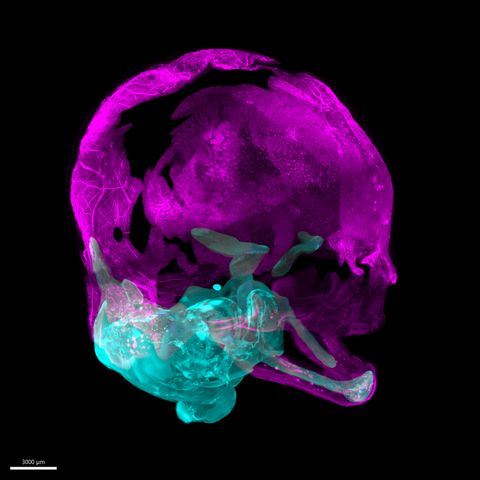Early skeleton map reveals how bones form in humans

Descarga y escucha en cualquier lugar
Descarga tus episodios favoritos y disfrútalos, ¡dondequiera que estés! Regístrate o inicia sesión ahora para acceder a la escucha sin conexión.
Descripción
Full view of how bones and joints form in the first trimester uncovers cells and pathways that could help diagnose and treat skeletal conditions in the future. The first ‘blueprint’...
mostra másThe first ‘blueprint’ of human skeletal development reveals how the skeleton forms, shedding light on the process of arthritis, and highlighting cells involved in conditions that affect skull and bone growth.
Researchers from the Wellcome Sanger Institute and collaborators have used cutting-edge genomic techniques to identify all the cells and pathways involved in the early stages of skeletal development. Part of the wider Human Cell Atlas project, this resource could be used to investigate whether current or future therapeutic drugs could disrupt skeletal growth if used during pregnancy.
The study, published today (20 November) in Nature, shows a clear picture of how cartilage acts as a scaffold for bone development across the skeleton, apart from the top of the skull. The team mapped all the cells critical for skull formation and investigated how genetic mutations may cause soft spots in the skull of newborns to fuse too early, restricting the growth of the developing brain. In the future, these cells could be used as possible diagnostic and therapeutic targets for identifying and treating congenital conditions.
Información
| Autor | Wellcome Sanger Institute |
| Organización | Wellcome Sanger Institute |
| Página web | - |
| Etiquetas |
Copyright 2024 - Spreaker Inc. an iHeartMedia Company
